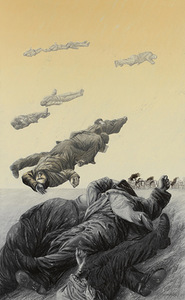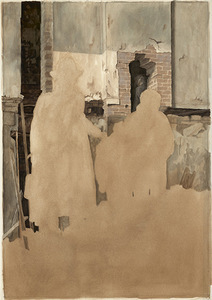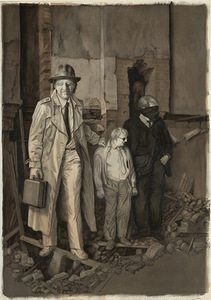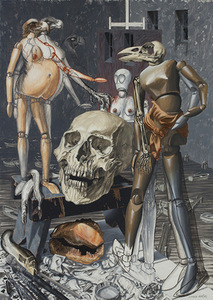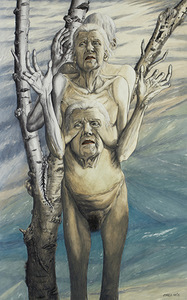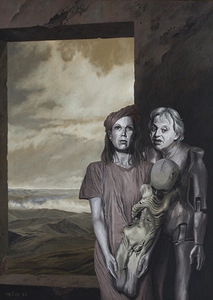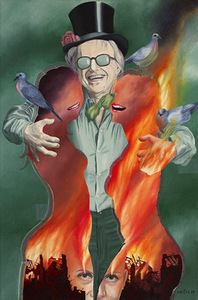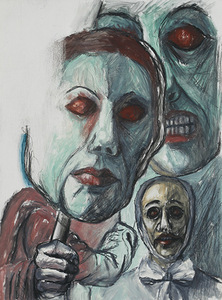Emotional exhibition of daily life and work of Aliutė Mečys (1943–2013) in Kaunas 1
In brief: Very personal, painful and unbearable works of Aliutė Mečys, fortunately, were able to see the light of day; did not stay behind and did not get all dusty in the attic, or were not thrown away after the life of a lonely woman and artist had ended.
The catalogue "Aliutė", sensitively designed by Milda Kairaitienė, draws the reader into the life of the artist, which is surrounded by legends. The lines written in German by Aliutė in letters or margins of her drawings seem so clear ant stable, but near to that, we can see the obscure and heavy pages of her life that are full of shadows. Not much is known - a very few memories of her life are left, even the name of her mother is unknown. But even this insufficient information that remains to this day, is too fatal, tragic and unbearable for one person, perhaps that is where the interest, not only in the artist's work but in her life as well, come from.
|
|
|
As we learn from the article in the catalogue by an art critic R. Žukienė, artist was born during the war, to a Lithuanian father and German mother. She was not loved, as a child she was forbidden to draw and afterwards, the young woman felt different not only among her family but in all the society as well. Isolation and alienation in the family was brought by her father's profession during the war. Aliutė Mečys creative path was not easy, rather cracked, unfinished with its sudden choices. She worked as a set designer and theatre costume designer for many years but then in 1979 she stopped it completely and dedicated herself only to painting. This is related to the artist's personal and creative relationship and separation with the composer György Ligeti (1923–2006), their joint creative fruit - opera "Le Grand Macabre."
|
|
|
|
|
|
The artist who knew the rules of set design, would draw every detail of her paintings realistically; she never lacked an academic brush stroke or spatial shading. There are no sketch-like "incompletions". If a painful idea of the painting requires incompleteness and a sense of continuation, the author simply stops drawing and leaves a whitish canvas.
|
|
|
The recurring characters in group compositions on the podium of ruins, make you think of a dystopic scenario running in the author's head. Indeed, the stories of the World War 2 concentration camps never left Aliutė alone - she collected newspaper clippings on the themes of war and post-war, personally researched the history. Among the grey ruins of such world we often see her and her friend's (and maybe parents, because in some titles her mother or both parents are mentioned) faces connected to the bodies of the mutants or simply body parts. Surreal atmosphere is too delicate of a term to describe her painting, because in the examples of classical surrealism we often see colorful jokes and pieces of blue sky, but here, there is not even a hint of the heavenly salvation.








